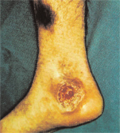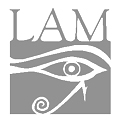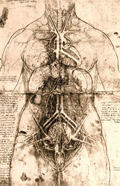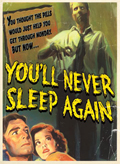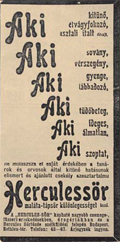The eLitMed.hu medical portal uses computer cookies for convenient operation. Detailed information can be found in the Cookie-policy.
Lege Artis Medicinae - 2006;16(05)
Content
[BETA-CELL DYSFUNCTION AND PROTECTION IN TYPE 2 DIABETES]
[Type 2 diabetes is caused by increased insulin resistance coupled with the disturbance of the secretion function of beta-cells. While the importance of insulin resistance has been emphasized in the last two decades, the pathogenetic role of beta-cell dysfunction has received less attention. Regarding this latter, several underlying mechanisms have been implicated, including increased secretory demand due to insulin resistance, glucose toxicity, lipotoxicity, islet cell amyloid deposition, and insulin resistance of the beta-cells themselves. In the milestone UKPDS (United Kingdom Prospective Diabetes Study) trial the metabolic status of the patients gradually deteriorated after 1 to 2 year of temporary improvement despite of an intensive sulfonylurea, insulin or metformin treatment. Progression of the disease could be slowed down but not stopped, which was attributed to progressive beta-cell failure. In this regard the insulinsensitizer thiazolidinediones, having recently joined the therapeutic palette, are promising because they protect and spare beta-cells through several ways. However, as the disease carrier progresses, it can reach a point when without using insulin the treatment cannot be successful anymore. Early use of thiazolidinediones may result in a marked delay of this point. This concept is supported by studies completed so far, and further clinical trials are ongoing so as to strengthen the evidence.]
[LOWER LIMB PAIN OF VASCULAR ORIGIN]
[The paper describes the characteristics of limb pain associated with acute and chronic arterial occlusions, venous and lymphatic diseases, and underlines the importance of early diagnosis and treatment that may determine the fate of the limb. The type of leg ulcer developing as a complication of an arterial or venous disease can usually be diagnosed by the inspection of the leg. Symptoms that accompany venous thrombosis of the leg often pose serious differential diagnostic problems. The venous sinuses of the leg are of great clinical importance. Thromboses occurring in these are usually recognized late, thus adequate therapy is also started belatedly. Correct diagnosis determines the therapy to be chosen. The diseases of lymphatic vessels often produce tense leg pain by concomitant venous oedema. Peripheral arterial disease has been shown to be an independent risk factor of cardiovascular morbidity and mortality. In view of this, early recognition and adequate therapy of vascular changes in the lower limb may prevent its progression to a life-threatening vascular disease affecting the whole body. In humans, individual vascular diseases develop in various times and locations, but with a similar pathomechanism. Based on this rule, cerebral, cardiac and peripheral localisation of the vascular disease must be searched for in each patient. High professional standards and a uniform diagnostic thinking are key elements of success. This is promoted in the paper by a flow-chart indicating the steps to be taken by the GP in the management and care of patients with vascular disease.]
[ANTICOAGULATION IN OBSTETRICS]
[The risk of thrombosis is increased about 5 to10 times during pregnancy and in the puerperium. Beside the classic risk factors, this is also due to special obstetrical causes. Delivery, especially Cesarean section further increases susceptibility to thrombosis. Prophylactic or therapeutic anticoagulant treatment can significantly reduce maternal and fetal morbidity and mortality. Just like in the non-pregnant state, subcutaneous low molecular weight heparin or intravenous or subcutaneous unfractionated heparin is recommended in pregnancy if anticoagulation is indicated. Warfarin is contraindicated in the first trimester because of its teratogenicity and also in the third trimester because of its long-lasting effect. Heparin does not cross the placenta, but its long-term administration may cause several side effects. Dosage, starting time and duration of the treatment depend on the measure of the risk of thrombosis. In certain cases (such as antiphospholipid syndrome) anticoagulant therapy is supplemented by low-dose acetylsalicylic acid. The date of delivery can be electively planned to minimalize bleeding and thrombotic complications. Vaginal delivery is preferred because of its lower risk of bleeding compared to Cesarean section. Intensity of anticoagulant therapy in the peripartum period should depend on the risk of thrombosis. The third phase of delivery should be actively driven by giving oxytocin to avoid bleeding complications. Since anticoagulant therapy is often continued during breast-feeding, it is important to know that neither warfarin, nor heparin is secreted in milk. When planning the treatment, each case requires individual consideration based on the type and number of risk factors, gestation time and, importantly, compliance of the patient.]
[THE COMPLEX EFFECT OF TREATMENT TARGETING THE OESTROGEN RECEPTORS IN POSTMENOPAUSAL WOMEN]
[Hormone depletion after menopause results in the dramatic increase of the incidence of a number of diseases. It should seem reasonable to substitute female hormones to prevent or treat these disorders. However, hormone replacement therapy has not fulfilled the expectations in its current form. While the first large, prospective, randomized, controlled primary prevention trial showed a beneficial effect of hormone replacement on bone fracture and colorectal cancer, the incidence of cardiovascular diseases and breast cancer increased. The overall effect of treatment was assessed by the so called global index. Based on the global index, the overall health risk exceeded benefits from 5 years use of combined oestrogen plus progestin among healthy postmenopausal women. In another study, oestrogen alone did not affect the incidence of coronary heart disease or colorectal cancer, neither was the increase in breast cancer rate significant. Similarly to combination therapy, the beneficial effect on bone fracture rate and the adverse effect on the incidence of cerebrovascular events have remained. Overall, oestrogen monotherapy had no effect on the global index. There is not enough data available yet to draw a conclusion on the overall effect of fitooestrogens that also target oestrogen receptors and tibolon, a steroid hormone with tissue-specific effects. Raloxifene, a selective oestrogen receptor modulator considerably decreases the rate of vertebral fractures. In a study it also decreased the number of peripheral fractures in a subgroup of patients with severe vertebral fractures. It reduced the rate of cardiovascular and cerebrovascular events in patients at increased cardiovascular risk. The incidence of breast cancer dropped both in the original 4-year study period and in its 4-year extension. Based on the beneficial change of the global index, it is only raloxifen that can currently be recommended for the complex treatment of postmenopausal women.]
[MEDICINAL HERBS IN THE TREATMENT OF LIVER DISEASES]
[Today, alternative medicine is increasingly popular among patients. Patients with liver diseases surprisingly often use complementary treatment, mainly medicinal herbs, with or without the knowledge of their physician. This is one of the reasons why doctors may not ignore alternative medicine. Another reason is that twenty to thirty percent of medicaments now used in conventional therapy were originally produced from herbs. This means that some of the herbal medicines now applied in alternative therapy may become a conventional drug in the future. This paper reviews publications of evidencebased medicine on herbal medicines most often used in the treatment of liver diseases, including silymarin, glycyrrhizin, phyllantus amarus, CH- 100, LIV.52, sho-saiko-to, bin-gan, compund 861 and oxymatrine. It is important for physicians to be also knowledgeable about potentially hepatotoxic medicinal herbs.]
[CARDIOVASCULAR PREVENTION BY INHIBITION OF THE ANGIOTENSIN CONVERTING ENZYME IN VIEW OF THE RESULTS OF RECENT TRIALS]
[Angiotensin converting enzyme inhibitors have long been basic drugs in the treatment of heart failure. In the preventive treatment of ischaemic heart disease, however, their mortality-reducing effect has only been proved recently. The HOPE was the first trial that showed a beneficial effect of the angiotensin converting enzyme inhibitor ramipril in patients at high risk for cardiovascular diseases. The EUROPA trial showed a positive role of perindopril in the reduction of hard clinical endpoints in relatively low risk patients with known coronary artery disease. The PEACE trial was designed to show a possible group effect of angiotensin converting enzyme inhibitors, but it failed to demonstrate a beneficial effect of trandolapril in patients with coronary artery disease. The latest data from the EUROPA trial and results from three new prevention trials with perindopril or amlodipine plus perindopril combination and with quinapril have been presented recently. Perindopril was administered in patients over 65 years with previous myocardial infarction and with good left ventricle function in the PREAMI study. By the end of the study period, the combined end point and remodelling had decreased significantly. The ASCOT-BPLA trial (amlodipine plus perindopril versus beta-blocker plus diuretic) showed a reduction in all coronary events, in the risk of stroke and in the prevalence of new-onset diabetes mellitus. Quinapril was used in the IMAGINE trial in patients after coronary bypass surgery; the results did not support the hypothesis that early treatment with angiotensin converting enzyme inhibitors improves clinical outcome. Based on these new results, the indication of perindopril has been extended to the reduction of cardiovascular risk in patients with stable coronary artery disease after myocardial infarction or revascularization.]
[NEW DATA ABOUT INFLAMMATORY MYOPATHIES]
[Idiopathic inflammatory myopathies are systemic autoimmune diseases with an immune-mediated inflammation of the striated muscles which lead to progressive muscle weakness. Their cause is still unknown, but recently the understanding of the molecular immunopathology has improved, which may as well offer therapeutic targets in the future. The aim of this review is to present currently available data on the most important factors and processes that are involved in the pathogenesis of these diseases. Although glucocorticoids remain the cornerstone of the treatment for the major forms of idiopathic inflammatory myopathies, there are other efficacious immunosuppressive agents with fewer side effects. The authors discuss classic treatment regimens as well as more recent therapeutic approaches.]
[DISEASES OF THE SPINE ACCOMPANIED BY LOWER BACK PAIN]
[It is estimated that 80% of the adult population consult their general practitioner for lower back pain at some point in their life. Apart from family doctors all medical specialists may encounter this complaint, which makes the wide-spread knowledge of this topic desirable. Pain associated with spinal diseases has two distinct types, non-inflammatory and inflammatory pain. Non-inflammatory diseases may cause moderate pain that increases with movement or functional limitation lasting for a few days, other times cause a pain pattern of varying intensity that radiates to the lower extremities and is accompanied by neurological symptoms, more rarely, present as cauda equina syndrome. In most cases, the underlying cause of the symptoms is a degenerative disorder of the spine. Spinal pain of inflammatory origin, on the other hand, is characterized by pain that worsens at night, characteristically narrowed mobility, changes in the skin, mucous membranes and joints, and sometimes fever or bad general condition. This type of pain is primarily caused by seronegative spondyloarthritis or, rarely, various pyogenic or non-pyogenic bacterial infections. Management of lower back pain aims to cease pain and restore function. These are achieved by unloading, medical pain relief, antiinflammatory drugs, muscle relaxants and antidepressants, as well as physiotherapy. In special cases the administration of other drugs (e.g., antibiotics) may be necessary along with pain relief. In seronegative spondyloarthritis traditional approaches will hopefully be supplemented by biological therapy in the future. This review of recently published results on spinal diseases accompanied by lower back pain will possibly help doctors in state-of-the art care of their patients.]
1.
Clinical Neuroscience
Is there any difference in mortality rates of atrial fibrillation detected before or after ischemic stroke?2.
Clinical Neuroscience
Factors influencing the level of stigma in Parkinson’s disease in western Turkey3.
Clinical Neuroscience
Neuropathic pain and mood disorders in earthquake survivors with peripheral nerve injuries4.
Journal of Nursing Theory and Practice
[Correlations of Sarcopenia, Frailty, Falls and Social Isolation – A Literature Review in the Light of Swedish Statistics]5.
Clinical Neuroscience
[Comparison of pain intensity measurements among patients with low-back pain]1.
Clinical Neuroscience Proceedings
[A Magyar Stroke Társaság XVIII. Kongresszusa és a Magyar Neuroszonológiai Társaság XV. Konferenciája. Absztraktfüzet]2.
3.
Journal of Nursing Theory and Practice
[A selection of the entries submitted to the literary contest "Honorable mission: the joys and challenges of our profession" ]4.
Journal of Nursing Theory and Practice
[End of Life and Palliative Care of Newborns in the Nursing Context]5.
Journal of Nursing Theory and Practice
[Aspects of Occupational Health Nursing for Incurable Patients ]




